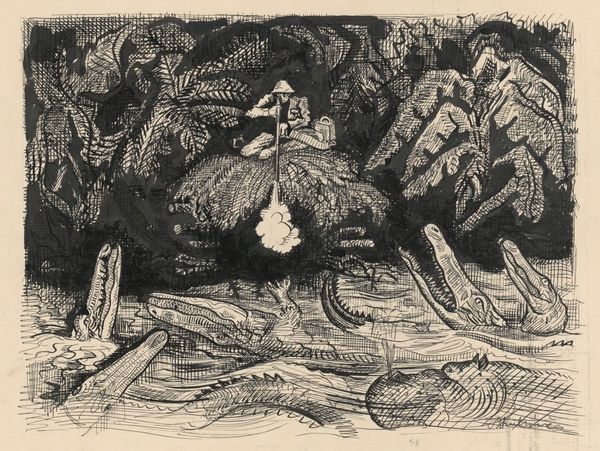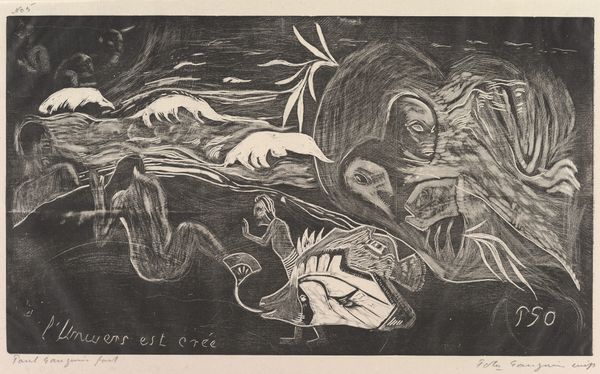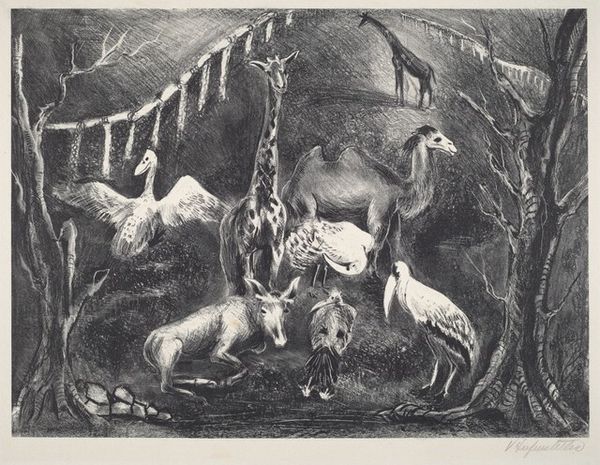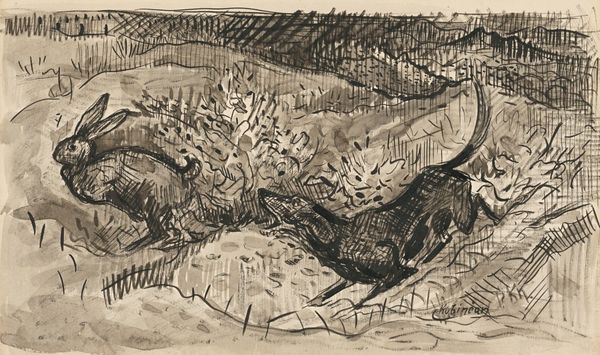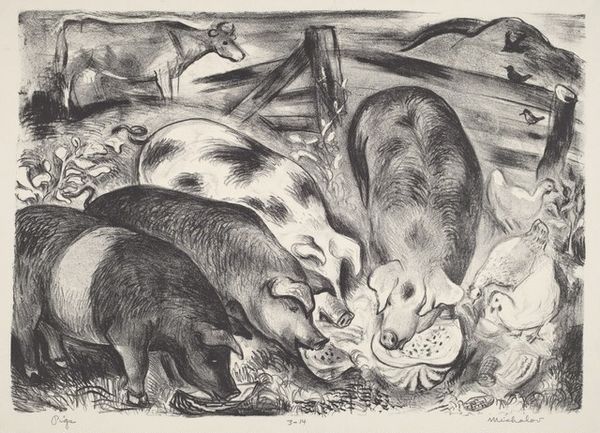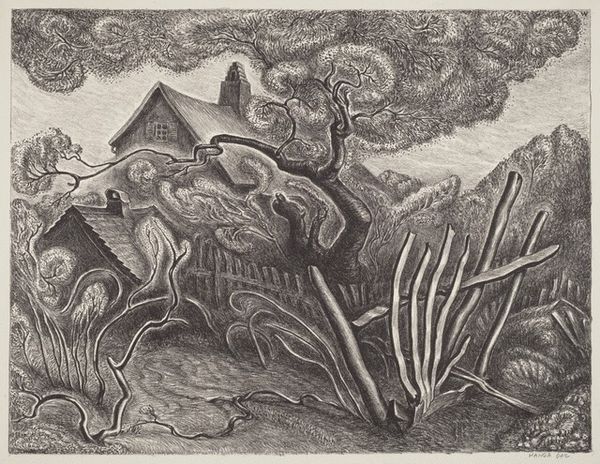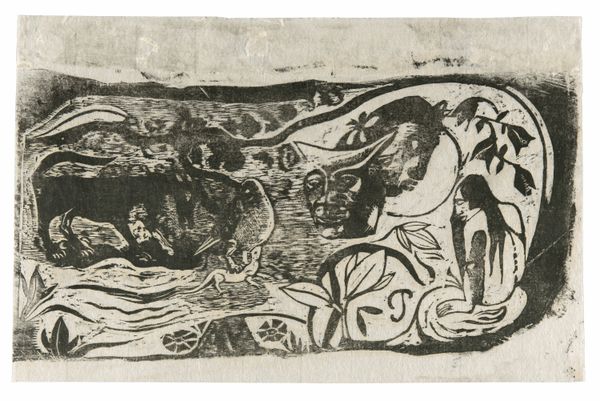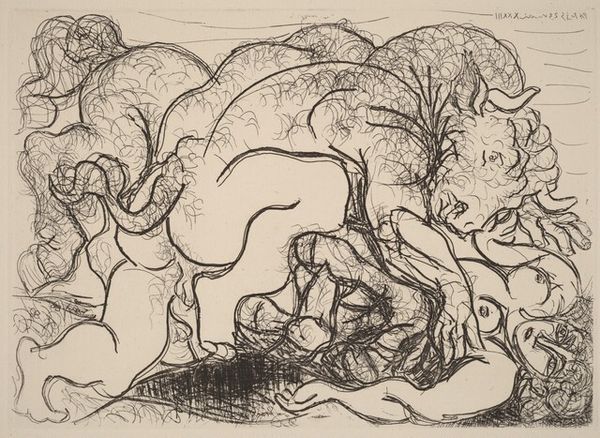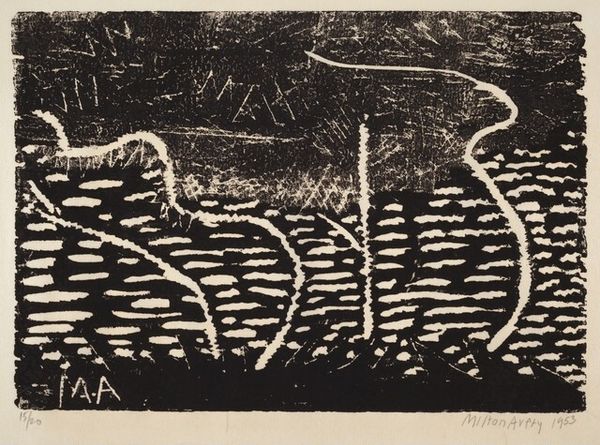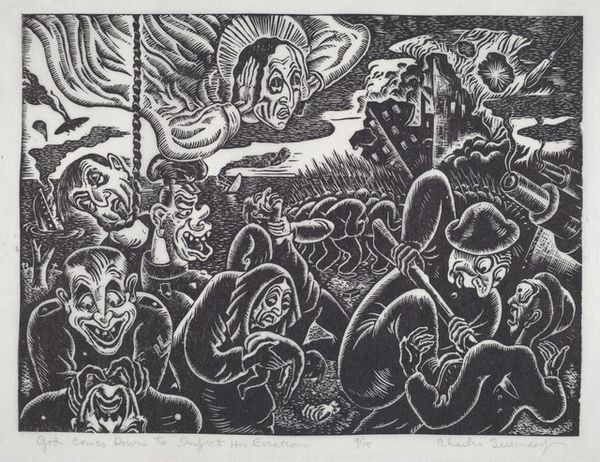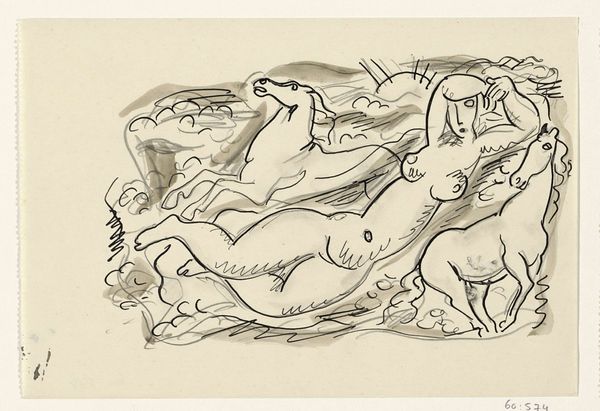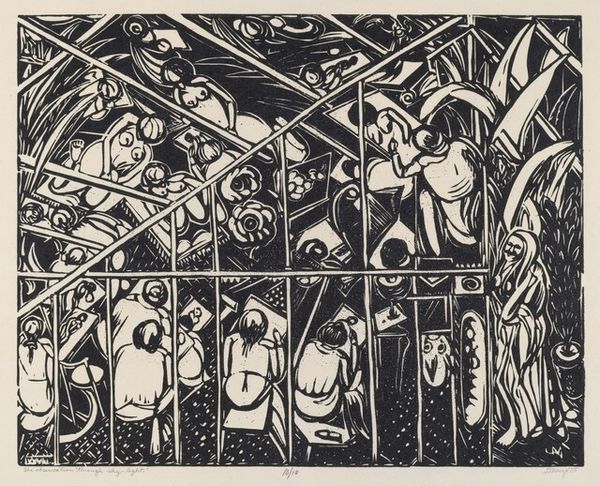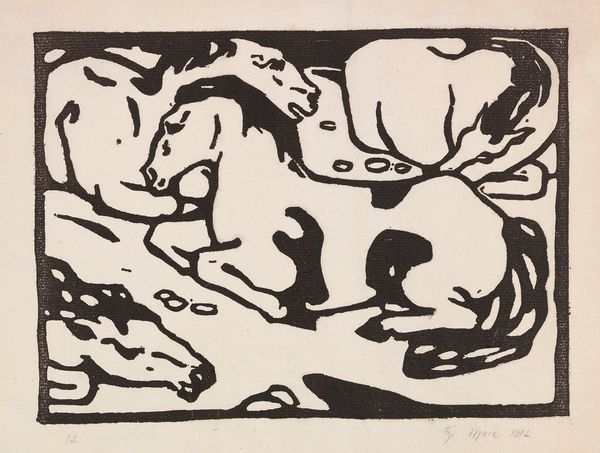
drawing, ink, pen
#
drawing
#
ink drawing
#
narrative-art
#
animal
#
pen sketch
#
landscape
#
figuration
#
ink
#
pen
Copyright: Public Domain: Artvee
Curator: Before us, we have Arnold Peter Weisz-Kubínčan's "Fox in a Trap," an ink and pen drawing completed in 1940. Editor: Immediately, the composition strikes me as unsettling. The stark black ink creates an ominous mood, highlighting the drama of the scene with its raw and expressive energy. Curator: Indeed. Weisz-Kubínčan masterfully employs line and contrast to articulate a narrative of entrapment and desperation. Note the gestural quality of the pen strokes, which evoke the animals' anxiety and the surrounding chaos. Editor: Precisely. And the spatial relationships! The looming, dark mass that constitutes the "trap" encloses a distressed fox while, above, another seems to escape as its comrade howls a mournful song. There's a clear focus on psychological impact, rather than anatomical perfection. Curator: The context is significant. This piece was created during a time of immense socio-political upheaval in Europe. Its crude but expressionistic rendering of these animal figures as stand-ins might offer insights into Weisz-Kubínčan’s feelings towards external pressures of conflict and subjugation. Editor: I see your point. We might think of the fox as a metaphor for individuals caught in circumstances of conflict. In its formal presentation, Weisz-Kubínčan subverts the typical use of animals as symbols of majesty in the service of authority, instead drawing them as emblems of fear and oppression. Curator: I agree. The interplay between dark and light—that dynamic push and pull—reinforces these concepts, underscoring the inherent tension between hope and despair. Editor: Looking closely, one can appreciate the boldness with which Weisz-Kubínčan used ink. It serves not just as a tool, but to charge the scene with emotive potential—almost tactile. The pen’s agility here communicates an urgent message that would translate easily into the political pamphlets and news broadsides of its time. Curator: Ultimately, "Fox in a Trap" challenges us to consider the multifaceted dimensions of resilience when societies find themselves caged by dark turns of history. Editor: Yes, a poignant reminder that art can be both a reflection and a quiet act of resistance during periods of acute vulnerability.
Comments
No comments
Be the first to comment and join the conversation on the ultimate creative platform.
